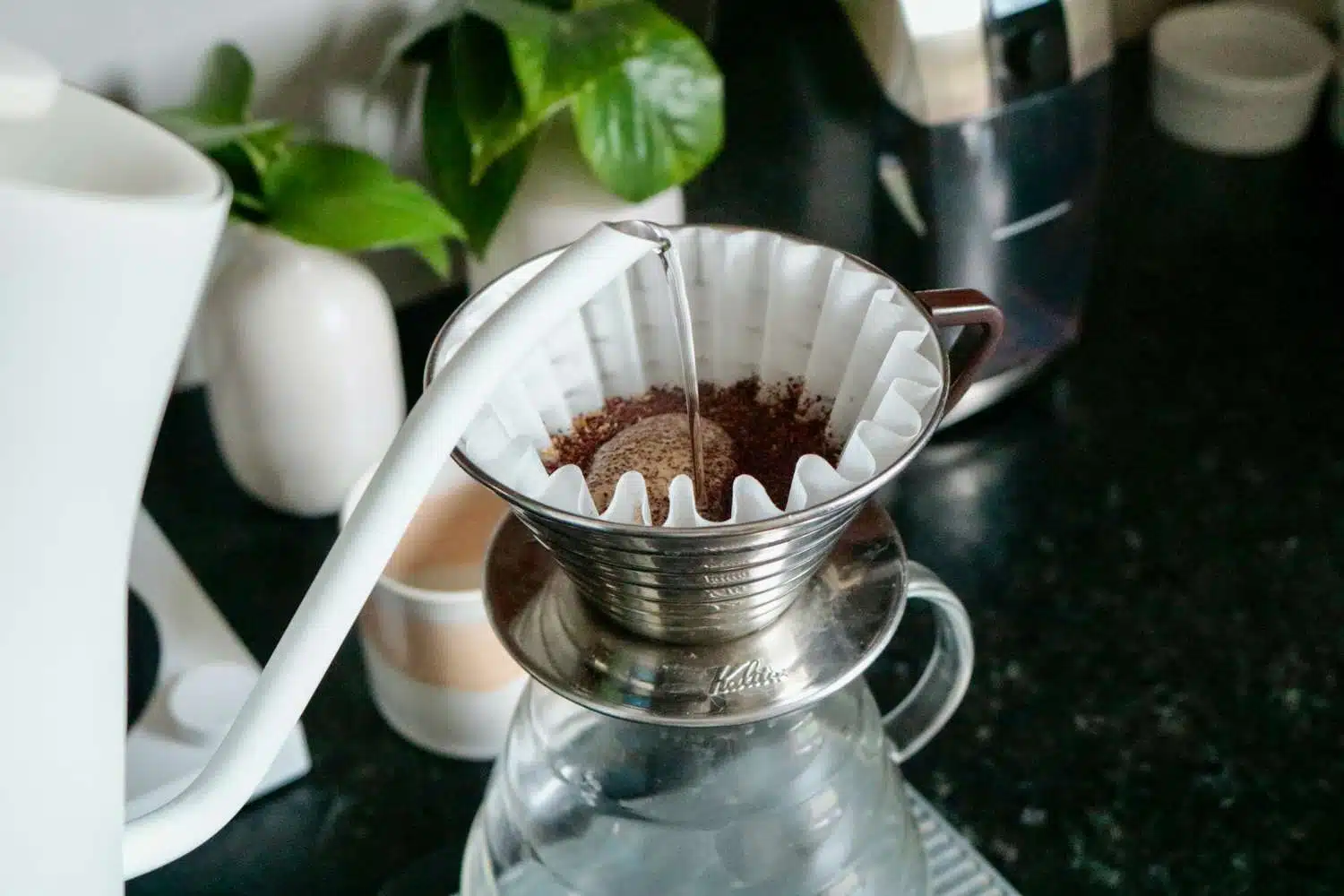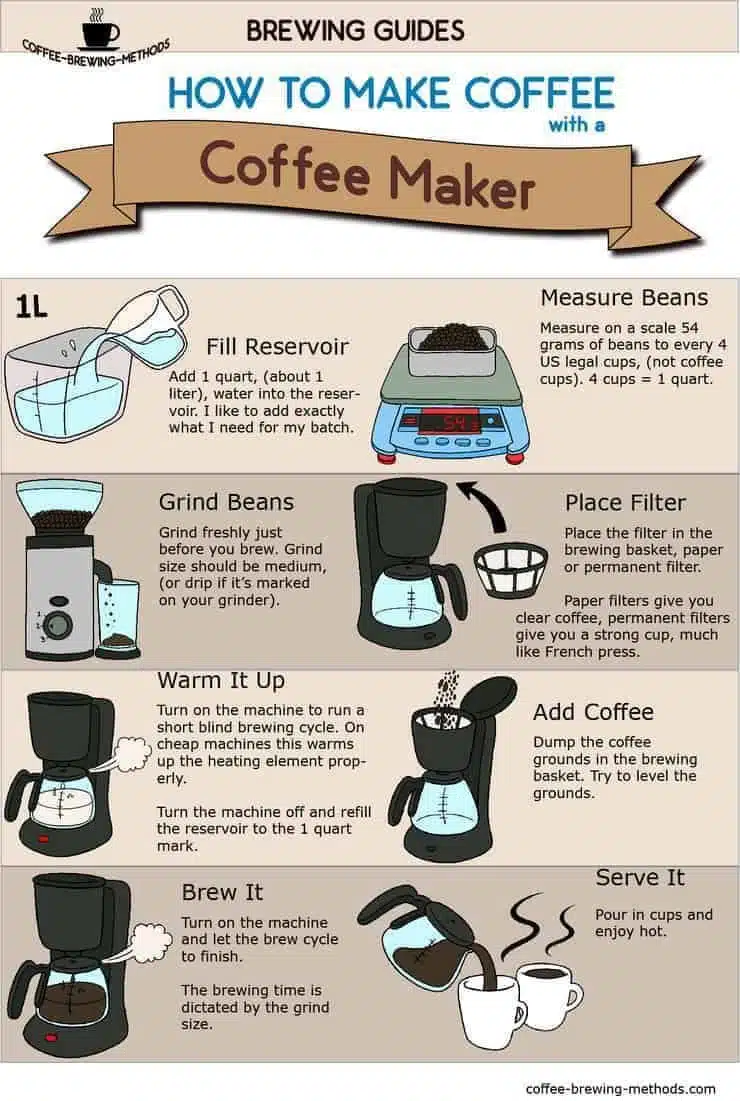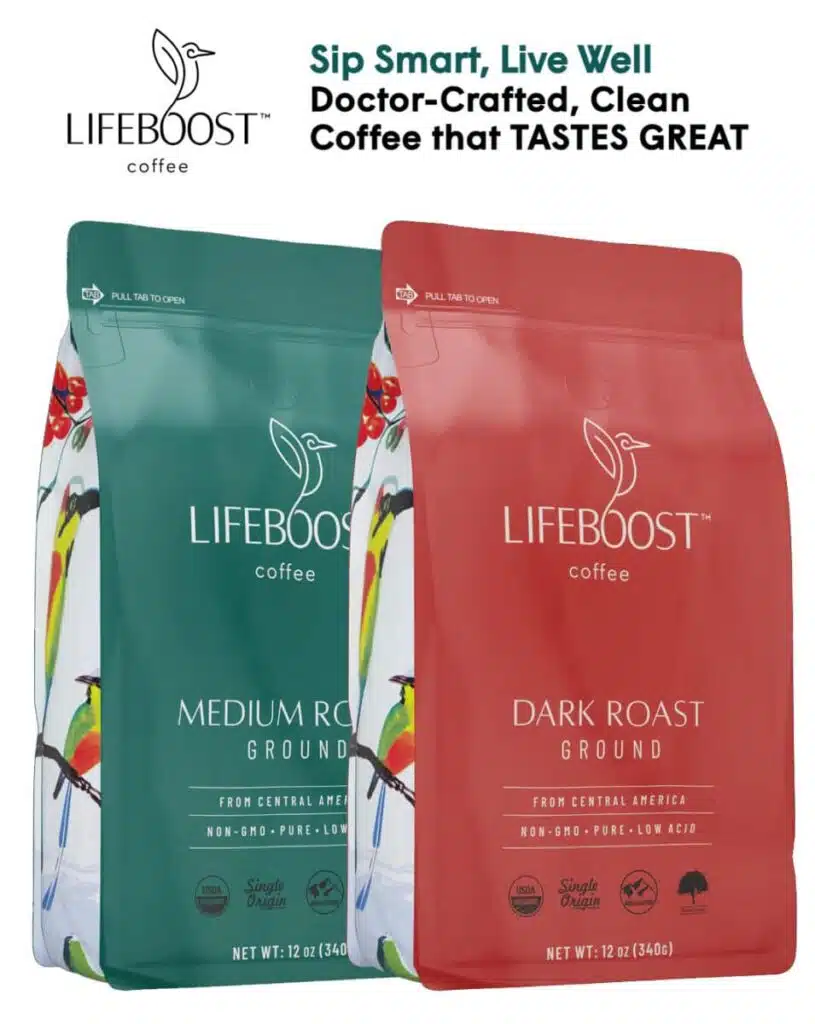Brewing good coffee is more than just a morning ritual; it’s an art form that unfolds with each step of the process. Each coffee bean tells a story, and understanding these secrets transforms your daily brew into a delightful experience. From selecting the freshest beans to mastering the perfect water quality, every detail matters. As you embark on this flavorful journey, you’ll discover that mindful brewing not only elevates your coffee but also enriches your life. So, let’s explore the fascinating world of brewing together and unlock the secrets to a cup that truly ignites your senses.
Understanding Coffee Beans: The Foundation of Flavor
When it comes to brewing a perfectly satisfying cup of coffee, the essential ingredient is undoubtedly the coffee bean. This fundamental element plays a pivotal role in determining flavor, aroma, and overall quality. Here’s what you need to know to elevate your brewing game:
Types of Coffee Beans
- Arabica: Known for its sweet and complex flavors, Arabica beans are preferred for specialty coffees. They typically offer vibrant acidity and a wide range of tasting notes.
- Robusta: With a stronger, bolder flavor, Robusta beans often have hints of chocolate and nuts. They contain higher caffeine levels and are commonly used in espresso blends.
Roast Levels
- Light Roast: Retains the bean’s original flavors, resulting in bright, fruity notes.
- Medium Roast: Balances acidity and sweetness, bringing out chocolatey undertones.
- Dark Roast: Yields a bold, smoky flavor. It often masks the bean’s original characteristics but provides a rich, full-bodied experience.
Factors to Consider
- Origin: Coffee from different regions offers unique profiles. For instance, Ethiopian coffees are often fruity, while Colombian varieties deliver a more balanced taste.
- Processing Method: The way beans are processed—from washed to natural—can influence flavor significantly.
By understanding the different types of coffee beans, their roast levels, and unique characteristics, you lay the groundwork for successful brewing. Remember, the journey of crafting your ideal cup begins with selecting the right bean!
The Importance of Freshness: Grinding at the Right Time
When it comes to brewing the perfect cup of coffee, freshness plays a pivotal role. The moment you grind your coffee beans, they release essential oils and aromas that enhance the overall flavor profile. To truly embrace the art of brewing, consider these key points about grinding at the right time:
- Unlocking Flavor: Freshly ground coffee beans yield notes and complexities that pre-ground coffee simply cannot offer. Freshly ground coffee can elevate your brewing experience to new heights.
- Preservation of Oils: Coffee’s natural oils contribute significantly to its rich flavor and aroma. Grinding your beans just before brewing helps preserve these oils, offering a fuller taste.
- Grind Size Matters: Different brewing methods require different grind sizes. For instance:
| Brewing Method | Recommended Grind Size |
|---|---|
| French Press | Coarse |
| Espresso | Fine |
| Pour Over | Medium |
- Control and Consistency: When you grind your own beans, you have complete control over the coarseness. This control allows for consistent brewing outcomes, making it easier to replicate your favorite flavors.
Embrace the practice of grinding your coffee just before brewing. It’s a simple yet powerful way to ensure your next cup brims with incredible freshness and tantalizing flavor. Remember, great brewing starts with great ingredients!
Water Quality: The Unsung Hero of Great Coffee
When it comes to brewing exceptional coffee, water quality often takes a back seat. However, it’s crucial to recognize that water can make or break your cup of joe. In fact, good brewing begins with the right water. Here’s why water quality is vital:
- Impact on Flavor: The type of water you use can significantly influence the taste of your brew. Chlorinated tap water can impart undesirable flavors while pure filtered water enhances the coffee’s natural notes.
- Mineral Content: Ideal brewing water has balanced mineral content. Consider these essentials:
- Calcium: Enhances brewing efficiency.
- Magnesium: Contributes to body and flavor.
- Sodium: Helps in flavor extraction but should be used sparingly.
- Total Dissolved Solids (TDS): Aim for TDS levels between 150-300 mg/L for optimal brewing. Too much can lead to mud-like brews, while too little may result in watery flavors.
Quick Comparison of Water Types
| Water Type | Taste Impact | Recommended for Brewing |
|---|---|---|
| Tap Water | Chlorinated taste | Avoid for best results |
| Filtered Water | Clean, neutral | Ideal for brewing |
| Spring Water | Naturally balanced | Excellent choice |
In summary, don’t underestimate the role of water in your brewing process. By ensuring you use quality water, you unlock the door to extraordinary coffee flavors and experiences. Embrace the unsung hero of brewing as you embark on your journey to coffee perfection!
Brewing Methods: Finding Your Perfect Technique
When it comes to brewing coffee, the method you choose directly influences the flavor and aroma of your cup. Exploring various brewing techniques opens up a world of possibilities. Here are some popular methods to consider:
- Drip Coffee Maker: Enables easy brewing for large quantities; perfect for busy mornings.
- French Press: Delivers a full-bodied experience, enhancing the coffee’s natural oils.
- Pour-Over: Offers control over brewing time and water flow, allowing you to extract unique flavors.
- Aeropress: Combines immersion and pressure, yielding a smooth and rich cup in minutes.
- Cold Brew: Creates a mellow flavor that’s refreshing and less acidic.
Comparison Table of Brewing Methods
| Method | Flavor Profile | Ease of Use | Brewing Time |
|---|---|---|---|
| Drip Coffee Maker | Balanced & mild | Very easy | 5-10 mins |
| French Press | Rich & bold | Easy | 4 mins |
| Pour-Over | Crisp & complex | Moderate | 3-4 mins |
| Aeropress | Smooth & concentrated | Easy | 1-2 mins |
| Cold Brew | Smooth & mellow | Moderate | 12-24 hrs |
Each brewing method has its unique charm. To find the perfect technique, try experimenting with each one. Pay attention to how different methods affect the taste; write down your observations and preferences. This intentional practice not only hones your brewing skills but also enhances your enjoyment of coffee. Remember, the journey of brewing is as rewarding as the destination—it’s all about celebrating the little moments in your coffee ritual!

The Art of Measurement: Getting Ratios Just Right
When it comes to brewing the perfect cup of coffee, precision matters. Ensuring the right ratio of coffee to water can significantly influence the flavor and strength of your brew. Here’s how you can master this essential art:
- Golden Ratio: Aim for a standard guideline of 1:15 to 1:18 for coffee-to-water ratios. For every gram of coffee, use 15 to 18 grams of water.
- Adjust to Taste: Feel free to tweak the ratios based on your personal preference. If you yearn for a bolder flavor, increase the coffee slightly. Conversely, if you prefer a milder cup, reduce it.
- Brew Methods Matter: Different brewing techniques may require varied ratios:
- French Press: 1:14 (stronger, full-bodied)
- Pour-over: 1:16 (clean, delicate flavors)
- Espresso: 1:2 (intense and concentrated)
Incorporating these ratios into your brewing routine enhances your coffee experience. Remember, the goal of brewing isn’t just to caffeinate; it’s to savor the richness and complexity of each cup.
Start experimenting with the ratios, and you’ll find that your journey in brewing becomes a flavorful adventure. Embrace the process, and soon, you’ll brew like a pro!
Mindful Brewing: Embracing the Ritual
Brewing coffee is more than just a morning routine; it can be a meditative experience that connects us with our senses. When you embrace mindful brewing, you transform the act into a cherished ritual. Here’s how you can deepen that experience:
- Set the Scene: Create a calming environment. Dim the lights and play your favorite music. This sets a positive tone for your brewing session.
- Engage Your Senses: Before you begin brewing, take a moment to appreciate the aroma of the coffee beans. Notice their unique characteristics; this creates a deeper connection with your coffee.
- Focus on the Process: Slow down. Instead of rushing through each step, savor the transformation of the ingredients. Measure your coffee and water carefully, and observe how they interact. Notice the changes in scent and appearance.
- Reflect on Your Preference: As you brew, think about what flavors you enjoy. Is it bright acidity or deep cocoa notes that please your palate?
- Take Your Time: Once brewed, don’t rush the drinking. Enjoy each sip mindfully, allowing the flavors to unfold on your tongue.
Incorporating mindfulness into your brewing process elevates your coffee experience, making it about more than just consumption. It becomes a celebration of the ritual, enhancing your connection to the world of brewing.
Temperature Control: Unlocking Aromatic Qualities
Mastering the art of brewing involves more than just selecting quality beans; temperature plays a crucial role in extracting the essential flavors. The right temperature can reveal the hidden aromatic qualities of your coffee, transforming an ordinary cup into an extraordinary experience.
Optimal Brewing Temperature
- Water temperature: Aim for a range between 195°F to 205°F (90°C to 96°C) for optimal extraction. This range allows the coffee oils and delicate flavors to flourish without burning the beans.
- Brew time: Keep in mind that brewing time also affects temperature. Longer brewing times can result in over-extraction, while shorter times may yield under-extraction. Consider experimenting to find your ideal balance.
Impact of Temperature on Flavors
- Cold temperature: Brewing at lower temperatures (e.g., cold brew) produces smoother, less acidic flavors, making it a favorite for those who enjoy a milder cup.
- High temperature: Conversely, brewing with hotter water creates a bolder and more robust flavor profile, perfect for espresso enthusiasts seeking intensity.
Incorporating temperature control into your brewing method enhances your coffee experience. Remember, each adjustment you make unlocks a new layer of flavor, inviting you to savor the journey of brewing. Whether you’re an aspiring barista or a casual drinker, understanding temperature will elevate your coffee game and allow you to appreciate the aromatic qualities fully.

Taste Testing: Discovering Your Unique Preferences
Taste testing is an exhilarating journey that elevates your brewing experience and deepens your appreciation for coffee. By experimenting with various elements, you can uncover flavors that resonate with your palate. Here’s how to embark on this flavorful adventure:
- Select Different Beans: Start with a variety of beans—light, medium, and dark roasts. Each one offers a distinct taste profile waiting to be discovered.
- Vary Brewing Methods: Try different brewing techniques, such as French press, pour-over, and espresso. Each method enhances certain flavors. For instance:
| Brewing Method | Flavor Profile |
|---|---|
| French Press | Full-bodied and robust |
| Pour-Over | Bright and clean |
| Espresso | Concentrated and rich |
- Experiment with Additives: Consider adding spices like cinnamon or nutmeg, or even a dash of vanilla. These elements can transform your coffee from ordinary to extraordinary.
- Document Your Tastings: Keep a journal of your findings, noting what you liked and didn’t, as well as how different brewing techniques affected the taste.
By engaging in this mindful brewing practice, you will not only refine your tasting skills but also learn to appreciate the complexity of flavors in your cup. So, gather your beans, brew with intention, and savor the experience. Happy brewing!
Enhancing Flavors: Adding Spices and Ingredients
One of the most delightful aspects of brewing coffee is the ability to customize and elevate its flavor profile. By incorporating various spices and ingredients, you can transform a simple cup into an extraordinary experience. Here are some popular additions to consider:
- Cinnamon: This warm spice adds a sweet and comforting aroma. Just a pinch can enhance your morning brew significantly.
- Vanilla: Vanilla extract or a natural vanilla bean infuses a luxurious and rich flavor, perfect for cold brew or lattes.
- Nutmeg: A sprinkle of nutmeg offers a spicy twist that can elevate a traditional cup of coffee to something truly special.
- Cocoa Powder: Love chocolate? Mixing cocoa powder into your brew creates a mocha-like flavor that’s irresistibly indulgent.
- Cardamom: A staple in Middle Eastern coffee traditions, this spice adds a unique, aromatic kick that pairs beautifully with dark roasts.
Tips for Brewing with Spices
- Experiment in Small Batches: Start with small amounts to find your ideal blend.
- Brew and Taste: After adding spices, brew a fresh cup and taste it. Adjust as necessary for your palate.
- Group Flavors: Try pairing spices together, like cinnamon and nutmeg, for a more complex flavor profile.
By embracing the art of brewing with spices and ingredients, you’ll discover a world of flavors that enhance your coffee and energize your day. Happy brewing!
Storing Coffee: Preserving Your Beans for Longevity
To truly elevate your coffee brewing experience, it’s crucial to understand the importance of proper coffee storage. After all, quality beans deserve the best care! Here are key strategies to ensure your beans remain fresh and flavorful:
1. Choose an Appropriate Container
- Airtight: Use a container that seals tightly to keep air out. Oxygen can quickly deteriorate flavor.
- Opaque: Light exposure can also harm your beans, so opt for a dark container or a coffee bag with a one-way valve.
2. Keep Away from Heat and Moisture
- Cool and Dry: Store your coffee beans in a pantry, avoiding direct sunlight, stoves, or refrigerators, where humidity can fluctuate.
- Room Temperature: Ideal storage is in a consistent room temperature environment.
3. Limit Quantity
- Buy in Small Batches: Purchase only what you can use within a few weeks to ensure freshness.
| Storage Method | Pros | Cons |
|---|---|---|
| Airtight container | Keeps oxygen out; preserves flavor | Size limitations |
| Freezing (short term) | Extends shelf life; slows aging | Risk of moisture exposure |
| Never refrigerate | Prevents condensation; maintains taste | Can be tempting to use fridge |
By mastering these storage techniques, you will not only prolong the life of your coffee beans but also enhance your brewing experience. Remember, each cup starts with properly stored beans that are ready to unleash their full potential!

Brew Like a Barista: Tips from the Pros
Imagine sipping coffee that delights your senses, rich in flavor and aroma. Luckily, you can achieve that barista-level quality right at home through mindful brewing. Here are some pro tips to elevate your coffee game:
- Choose Quality Beans: Begin with high-quality, whole coffee beans. Freshness is key; aim for beans roasted within the past two weeks.
- Invest in Gear: A good grinder is essential for consistent brewing. Burr grinders outperform blade grinders by producing uniform grounds, crucial for flavor extraction.
Master Brewing Methods: Explore various brewing techniques—French press, pour-over, or espresso. Each method has its unique impact on flavor:
| Method | Flavor Profile | Ease of Use |
|---|---|---|
| French Press | Rich and full-bodied | Easy |
| Pour-Over | Bright and clean | Moderate |
| Espresso | Intense and concentrated | Advanced |
- Experiment with Ratios: Use the golden ratio of 1:15 coffee to water for a balanced brew. Adjust according to taste, but this serves as a great starting point.
- Focus on Presentation: Aesthetic matters! Serve your coffee in beautiful mugs and take a moment to appreciate its aroma before sipping.
By embracing these tips, you’ll not only enhance your brewing experience but also savor each cup like a true barista. Happy brewing!
Frequently Asked Questions
What type of coffee beans should I use for the best flavor?
Choosing the right coffee beans is crucial for brewing a delightful cup of coffee. Look for high-quality, freshly roasted beans, preferably Arabica for their rich flavor and complexity. Consider trying beans from different origins like Colombian, Ethiopian, or Sumatra, as each offers unique characteristics. Freshness matters greatly; buy whole beans and grind them just before brewing to retain their natural oils and flavors, giving you a vibrant and aromatic experience each time.
How do I store my coffee beans to maintain freshness?
To keep your coffee beans fresh and flavorful, store them in an airtight container away from light, heat, and moisture. A dark, cool place like a pantry is ideal. Vacuum-sealed bags or opaque containers are excellent choices. Avoid keeping beans in the fridge, as humidity can impact the flavor negatively. Remember, freshly roasted coffee is best enjoyed promptly, so buy small batches to ensure you always have the freshest beans for brewing each morning.
What grind size should I use for different brewing methods?
The grind size of your coffee plays a significant role in the extraction process and ultimately affects the taste. For a French press, use a coarse grind to allow the coffee to steep without over-extracting. A medium grind works well for drip coffee makers, while a fine grind is best for espresso machines. Experimenting with different grind sizes will help you discover the perfect balance for your preferred brewing method, leading to a more personalized and enjoyable coffee experience.
What is the ideal water temperature for brewing coffee?
The temperature of the water used for brewing coffee is essential for extracting the best flavors from your beans. Ideally, the water should be between 195°F to 205°F (90°C to 96°C). Water that’s too hot can scorch the coffee, leading to bitterness, while cooler water may result in under-extraction, leaving the coffee weak and lacking flavor. A simple tip is to let boiling water sit for about 30 seconds before pouring it over your coffee grounds for the optimum extraction.
How much coffee should I use for the perfect cup?
Getting the right coffee-to-water ratio is crucial for brewing a perfect cup of coffee. A general guideline is to use one to two tablespoons of coffee grounds for every six ounces of water, but this can be adjusted depending on personal taste and brewing method. Those who enjoy a bolder flavor may prefer to inch closer to the two-tablespoon mark, while lighter preferences might stick to one. Don’t hesitate to experiment until you discover your ideal brew strength!


